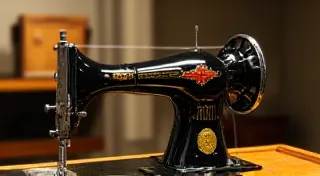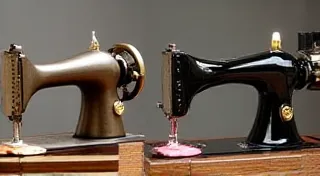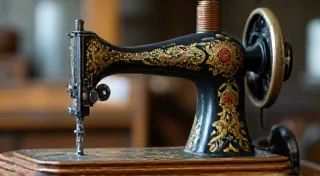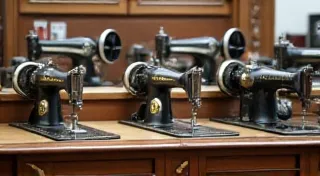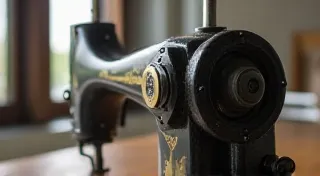Understanding Serial Numbers: Dating Your Vintage Sewing Machine
For the avid collector of vintage sewing machines, knowing the age of a machine isn't just a matter of trivia – it’s crucial for accurate identification, assessing value, and appreciating its place in sewing history. While some machines have obvious dates stamped on them, many do not. That's where serial numbers come in. These unique identifiers, etched or stamped onto the machine’s frame, can unlock a wealth of information about its manufacturing date and origin. This guide will explore how to understand and decipher serial numbers on vintage sewing machines.
Why Serial Numbers Matter in Sewing Machine Collecting
Serial numbers aren't just random sequences of numbers. They're a vital record-keeping tool used by manufacturers. They connect a specific machine to a production run and, ideally, to a documented date. Here's why they’re so important for collectors:
- Dating Machines: The most obvious reason – to determine the approximate year your machine was manufactured.
- Identification: Serial numbers often correlate to specific model variations or modifications made during a machine’s production run.
- Valuation: Rarity and condition significantly impact value, and knowing the production date helps determine both.
- Historical Context: Knowing when a machine was made allows you to place it within the broader history of sewing technology and design.
- Research & Provenance: They can assist in tracing a machine's history, though this is often challenging.
General Principles of Serial Number Systems
It's important to understand that there's no universal serial number system. Each manufacturer used their own methods, and these methods often changed over time. However, some general principles apply:
- Location: Serial numbers are usually found on the machine's frame, often on the underside, the back, or near the handwheel. Sometimes, they're hidden under a cover plate.
- Format: Serial numbers can be purely numeric, or they can include letters alongside numbers. Early machines often used simpler numeric sequences, while later machines incorporated letters to allow for more combinations.
- Sequential vs. Batch Numbers: Early serial numbers were often strictly sequential, representing the order a machine was produced. Later systems sometimes grouped machines into batches based on design changes or supply chain issues.
- Multiple Serial Numbers: Some machines, especially those produced with sub-assemblies made by different manufacturers, may have multiple serial numbers, one for the main machine and another for the motor or cabinet.
Decoding Serial Numbers: Common Manufacturers and Their Systems
Let's examine the serial number systems of some of the most popular vintage sewing machine manufacturers:
Singer
Singer is arguably the most widely collected vintage sewing machine brand, and their serial number systems are relatively well-documented, though they evolved over the decades. Early Singer machines (pre-1900) typically had a simple numeric serial number stamped on the machine's frame. A useful tool for dating these machines is the Singer Serial Number Chart, available from various online sources. After 1900, Singer started using more complex serial number systems incorporating letters and numbers.
Important Note: Singer serial numbers do *not* always directly correspond to a calendar year. There's often a lag between the serial number being assigned and the machine actually leaving the factory. Generally, a serial number ending in "1" was manufactured in 1911 or later, while serial numbers between 900,000 and 2,000,000 correlate to a wider range of years. Further research is often required to pinpoint the exact date.
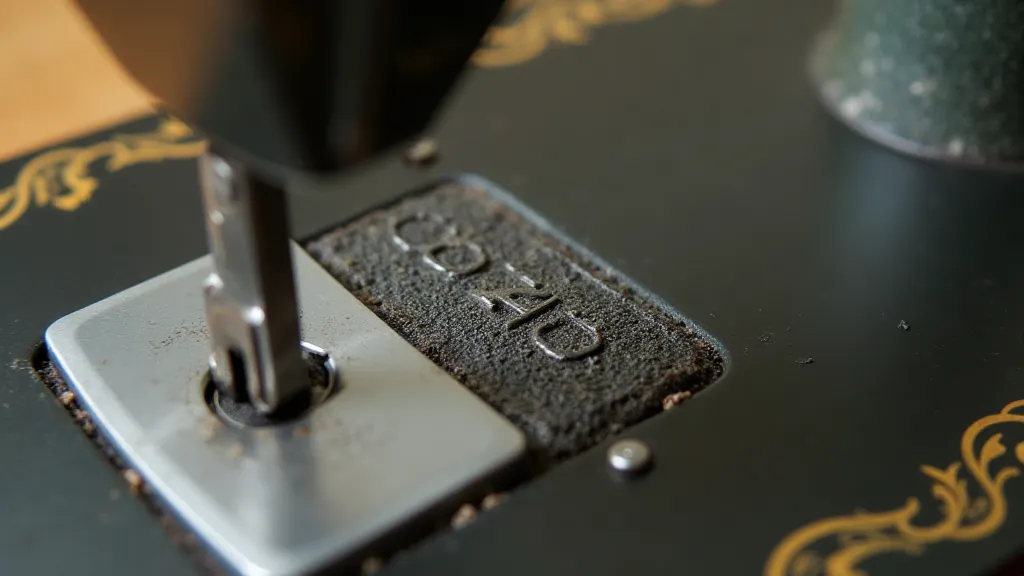
Jones
Jones Sewing Machine Company, known for their reliable and often powerful machines, also used numeric serial numbers. Early Jones machines had relatively straightforward numbering. Later Jones serial numbers can be challenging to decode, and require consulting specialized Jones serial number charts. The Jones numbering system often uses a combined format, with the first numbers representing the machine model and the following numbers indicating the sequential build number.
Pfaff
Pfaff, a German manufacturer renowned for their innovative designs, particularly their straight-stitch and chain-stitch machines, also utilized serial numbers. Early Pfaff machines had sequential serial numbers. Later models, particularly those manufactured after World War II, incorporated a more complicated alphanumeric system. Decoding these serial numbers often requires specific Pfaff serial number charts available from Pfaff enthusiast groups.
Bernina
Bernina, a Swiss company known for their high-quality quilting and embroidery machines, implemented serial numbers similar to other manufacturers. Early Bernina machines had simpler numbering, but the later machines evolved to a more alphanumeric serial number.
White
White Sewing Machine Company, known for their unique rotary sewing machines, often included the model number directly within the serial number, making identification easier. However, decoding the specific year of manufacture requires consulting specialized charts.
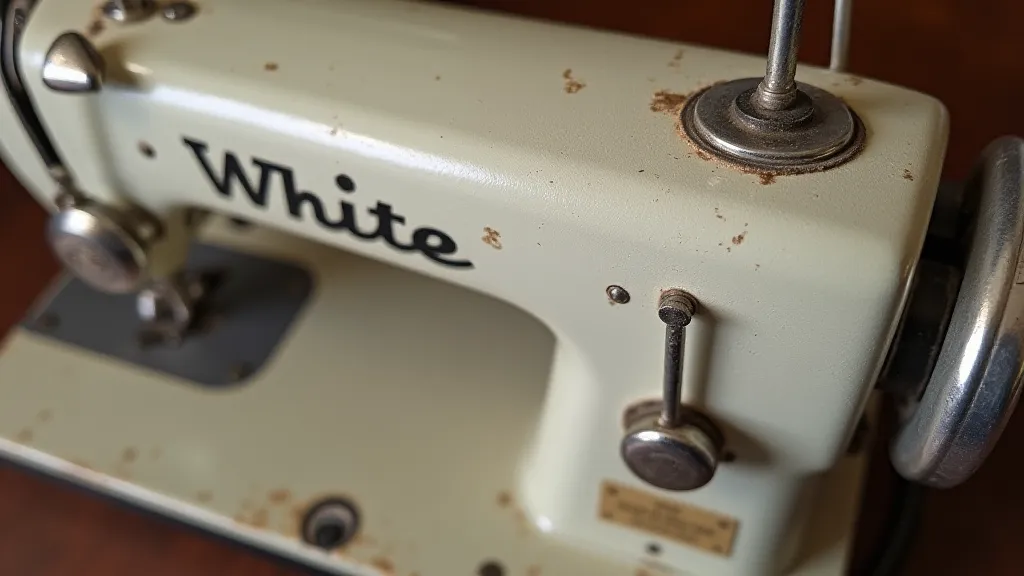
Resources for Decoding Serial Numbers
While this guide provides a general overview, deciphering serial numbers often requires consulting specialized resources. Here are some helpful resources:
- Manufacturer's Websites & Forums: Many manufacturers have online communities or forums where enthusiasts share information about serial numbers.
- Antique Sewing Machine Collectors' Clubs: Joining a local or online collectors' club can provide access to valuable resources and expertise.
- Online Databases and Charts: Several websites maintain serial number charts for various manufacturers. A simple online search for "[Manufacturer Name] serial number chart" will yield results.
- Books and Publications: Numerous books and publications are dedicated to antique sewing machines, often including detailed serial number information.
Caveats and Considerations
It's important to remember that serial numbers are not always definitive. Here are some things to keep in mind:
- Counterfeiting: Sadly, counterfeit vintage sewing machines exist. These machines often have falsified serial numbers.
- Replacement Parts: Replacing a machine’s frame can erase the original serial number.
- Modifications: Significant modifications to a machine can sometimes obscure or remove the original serial number.
- Inconsistent Records: Manufacturing records are often incomplete or inaccurate, making precise dating difficult.
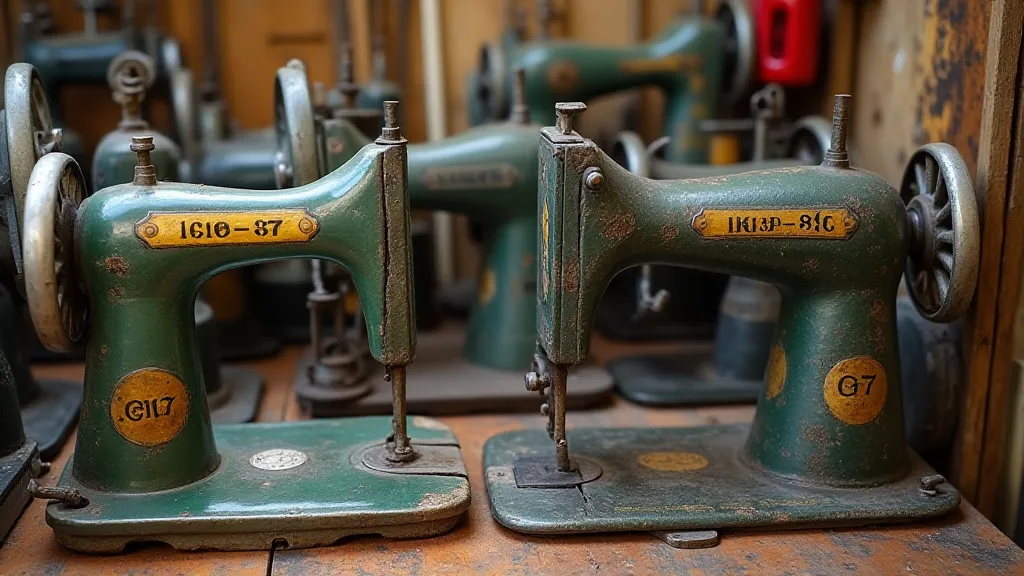
Conclusion
Understanding serial numbers is a crucial skill for any serious collector of vintage sewing machines. While deciphering these numbers can be challenging, the rewards – a deeper appreciation of these remarkable machines and their place in history – are well worth the effort. Remember to utilize available resources, be aware of potential pitfalls, and enjoy the fascinating journey of uncovering the stories hidden within these mechanical treasures.

